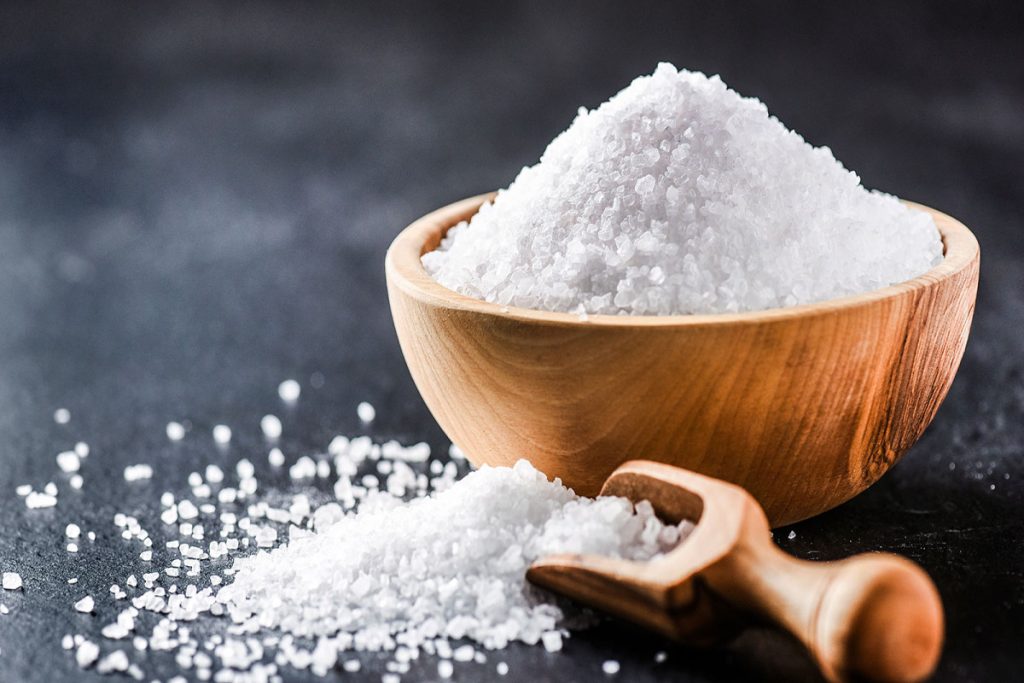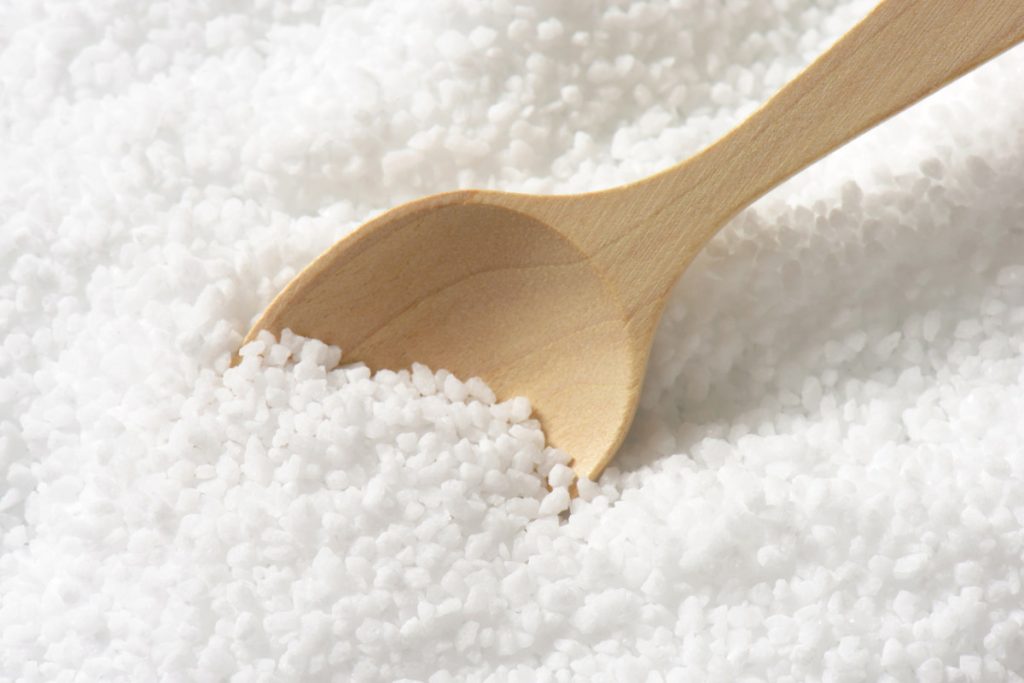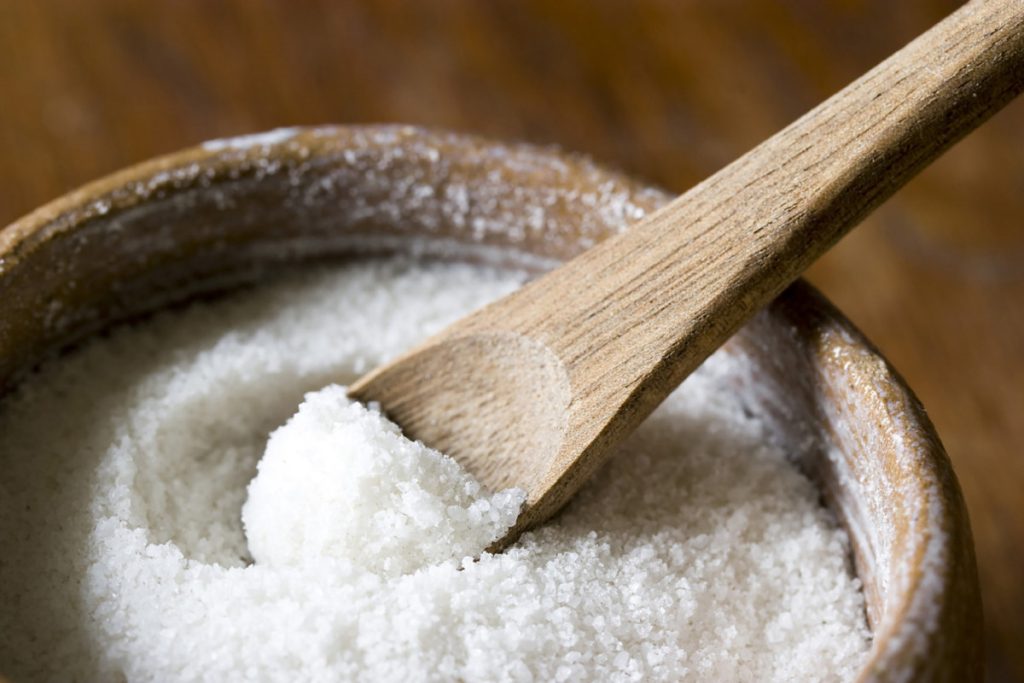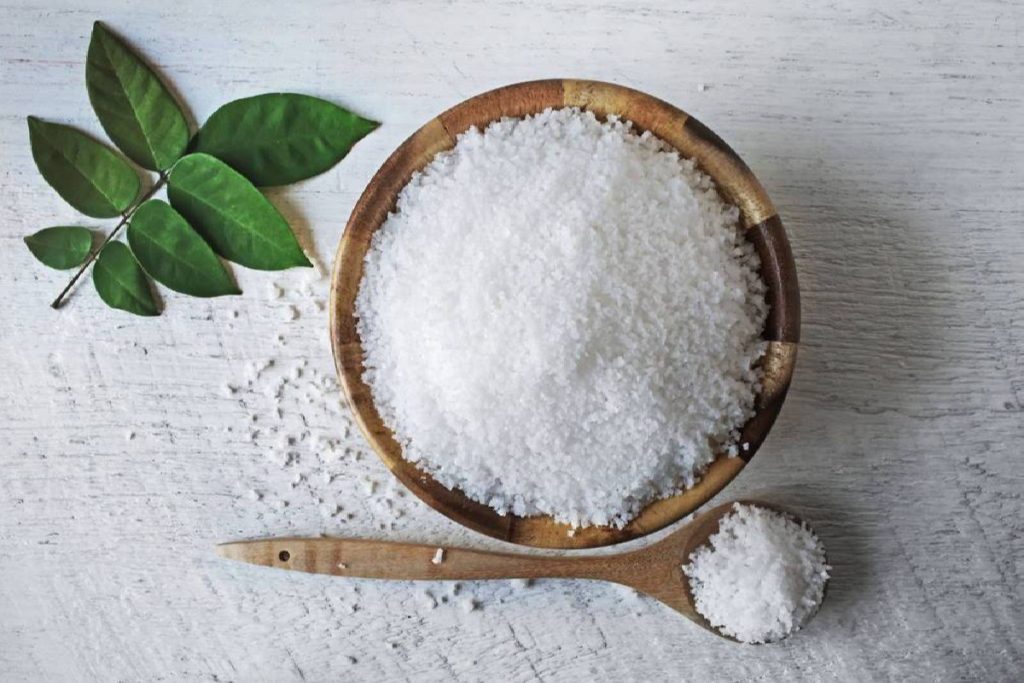How much aquarium salt per gallon for betta fish? Adding aquarium salt to your Betta fish tank can help with many conditions. It’s a good idea to have it on hand, especially if you have Bettas in an open-top tank and want them to live the longest possible life.
Some people may be concerned about using too much salt in their aquariums, but keep reading for some tips on how much aquarium salt per gallon is right for your Betta fish tank!
As freshwater aquarium hobbyists, we are always looking for new ways to upgrade our fish tanks and make them better for our precious fish. People who like freshwater betta fish may have heard that aquarium salt is good for these fish.
Aquarium salt can help reduce stress in the water from shipping and handling, oxygenate the water, remove chlorine, and kill pathogens that may be harmful to your fish.
While adding aquarium salt is known to be beneficial, there is a question that every betta lover wants to know: how much salt should you put into your 1-gallon tank?

How much aquarium salt per gallon for betta fish?
When thinking about how much aquarium salt to use per gallon for Betta fish, it’s important to remember that the specific gravity of your water will affect this. The higher the specific gravity, the more aquarium salt you’ll need.
A recommended starting point is 1 tablespoon per 5 gallons of water. You can then adjust this amount according to what you find works best in your system and with your betta fish.
A good rule of thumb is to use aquarium salt when the specific gravity of your water reaches 1.005 or higher, which is equivalent to 5 grams per liter (or 0.5%). This will help prevent disease and fight off parasites that might otherwise be harmful to your Betta fish.
Whether you’re a beginner or experienced aquarist, it’s important to understand how much aquarium salt per gallon is needed for Betta fish.
Use this guide as a starting point, but be sure to do your research and test your water regularly so that you can fine-tune the amount of aquarium salt in your aquarium system.
Key takeaway points
- What is aquarium salt?
- Why is aquarium salt important for Betta fish?
- How do I add aquarium salt to my Betta fish tank?
- How long does aquarium salt last in the tank?
- What are the pros and cons of using aquarium salt?
- Other ways to help Betta fish with fin rot disease
- Other reasons to use aquarium salt in the Betta tank
- What are the benefits of using aquarium salt?

1. What is aquarium salt?
Aquarium salt is a type of salt that is used to treat aquarium fish. It can also be known as marine salt, aquarium salt, or fish salt. Aquarium salt is used to treat diseases and injuries in aquarium fish, as well as prevent them from occurring.
It is also used to prevent the fish from getting sick in the first place. When using salt, it is important that you do not use table salt or rock salt. These salts will cause more harm than good to your fish.
Aquarium salt is available under many different brands, but they all have the same active ingredients. It is important that you use only aquarium salt when treating your fish.
There are many different types of aquarium salt available, but they all contain the same active ingredients. The two main ingredients in aquarium salt are magnesium chloride and sodium chloride.
Magnesium chloride is a type of compound that helps treat minor injuries or illnesses in your fish. It also helps with the prevention of disease by keeping the pH level stable in your tank.
The other main ingredient, sodium chloride, is the same thing as table salt. It helps to maintain the level of electrolytes in your fish’s body so that they can continue to function normally.
2. Why is aquarium salt important for Betta fish?
Aquarium salt is a naturally occurring mineral that is found in water. It helps maintain the right PH level in your tank and also reduces stress on fish, which can help them live longer.
Aquarium salt also helps heal wounds and reduce infections by killing bacteria. This can be beneficial when treating fin rot or ich (ick), two common ailments that plague Betta fish.
Betta fish are very sensitive to changes in salinity, so it’s important to get a test kit and monitor the levels of your aquarium water. If you notice that the PH level is off, add or remove salt accordingly.
If your Betta fish is swimming erratically, check the PH level in your tank. If it’s too high or too low, you may need to add or remove aquarium salt.
Betta fish are very sensitive to changes in salinity, so it’s important to get a test kit and monitor the levels of your aquarium water. If you notice that the PH level is off, add or remove salt accordingly.
Betta fish are also very sensitive to changes in temperature and water hardness. If you notice that your Betta is acting lethargic or swimming around erratically, check the temperature of your tank.

3. How do I add aquarium salt to my Betta fish tank?
Add aquarium salt to the tank in the morning, as this can help induce a bout of exercise that stimulates the fish’s digestive tract. You would add about 1 tablespoon of aquarium salt for every 5 gallons of water or 1 teaspoon for every 212 gallons of water.
Then, stir the aquarium salt into your fish tank with a spoon or a plastic spatula until it dissolves fully and there are no visible grains left floating in the tank (that is why we recommend using an eyedropper dispenser).
The next step is to wait for about 15 minutes and then test the water again. If your aquarium salt does not dissolve fully, you need to stir it in again with a spoon.
If your aquarium salt does not dissolve fully but there are still some visible grains of salt floating in the tank, you should wait for another 15 minutes. Then test the water again.
If it still reads above 0 PPT (parts per thousand), then you need to add more aquarium salt until there are no visible grains left floating in the tank.
If your water is still above 0 PPT after adding aquarium salt, then you should also add some aquarium buffer to help neutralize the high pH. This can be accomplished by combining 1 tablespoon baking soda with 212 gallons of water or 12 cup baking soda with 5 gallons of water.
The next step is to fill your aquarium with water that has been treated with aquarium salt. If you are using a bucket or a tank with a pump, then you can do this by pouring the water in slowly over about 15 minutes. Still looking for more answers check out betta care guide.
4. How long does aquarium salt last in the tank?
How long aquarium salt lasts in your tank depends on the brand you purchase. Some of these products will last for years, while others may only last for a few months. You can test your aquarium salt to see if it is still effective.
If your test comes back with good results, then you will know that your aquarium salt is still working properly and that you don’t need to replace it at this time. However, if the test shows poor results or nothing at all, then it’s time to get new aquarium salt!
If your aquarium salt has been stored correctly and hasn’t been exposed to water, then it will last indefinitely. However, if you have any that were exposed to moisture or heat, they may not last as long.
The best way to ensure that your aquarium salt lasts as long as possible is to store it in a dry place. Some people even put their salt in the freezer, which will also help keep it dry and fresh longer.
If you are looking for an inexpensive way to keep your aquarium salt from going bad, then freezing it is one of the best options. If you have any that were exposed to moisture or heat, they may not last as long.
The best way to ensure that your aquarium salt lasts as long as possible is to store it in a dry place. Some people even put their salt in the freezer, which will also help keep it dry and fresh longer.

5. What are the pros and cons of using aquarium salt?
Aquarium salt is a mineral supplement that can be used to treat diseases and parasites, but it can also be used as a preventive measure.
It is used to prevent the growth of unwanted organisms (like algae) in aquariums and to make the water more salted than normal, which helps fish that live in saltwater.
It is used to treat certain diseases and conditions, such as fin rot and some bacterial infections. It can also be used as a preventive measure against these conditions, especially if your fish are stressed or in an uncycled tank.
The primary benefit of using aquarium salt is the prevention of disease, but it also helps with other issues such as stress, which can be caused by many things including poor water quality, temperature changes, and not enough oxygen in the water (among others).
Aquarium salt can be used in both freshwater and marine tanks but should never be added to reef tanks, as it will kill all invertebrates living in your tank.
You should only use aquarium salt as directed by your veterinarian because it can cause serious problems if overdosed. If you do not know how much to give your fish, then consult your vet before starting any treatment with this product.
The pros of using aquarium salt include:
Aquarium salt can improve the health of your betta fish. It’s especially important if you have a sick or weak betta fish, which will benefit from the added osmotic pressure that aquarium salt provides.
Aquarium salt can also increase the lifespan of your betta fish by making them less susceptible to parasites and infections.
Aquarium salt helps stabilize pH levels in water and helps prevent slippery surfaces from forming in your tank. This makes it easier for you to keep your tank clean! (And let’s face it—who wants an unkempt home for their pet?)
The amount of work you’ll need to put into cleaning is determined by how much algae grows on the surface of their habitat over time, but with regular maintenance, it shouldn’t be too difficult to keep things looking good!
Best aquarium salt
Top pick

$13 Instant Ocean Sea Salt (50 gal)_MB
No matter what size your aquarium, Instant Ocean sea salts and water care products offer the smartest, easiest way to bring to ocean home. Our scientifically formulated sea salts are used exclusively by many of leading large-scale aquariums and research facilities across the country.
Editor’s choice

$95 Red Sea Fish Pharm ARE11230 Coral Pro Marine Salt for Aquarium, 175-Gallon
ed Sea’s Coral Pro Salt contains biologically balanced, elevated levels of the foundation elements (Calcium, Magnesium, Carbonates) necessary for sustainable, accelerated coral growth.
6. Other ways to help Betta fish with fin rot disease
If you have a betta fish and it’s been experiencing fin rot disease, there are several things you can do to help your pet. The first is the most obvious: add aquarium salt to your tank. You can also use a water conditioner or add aquarium salt directly to the water itself.
This will help with the symptoms of fin rot disease by reducing stress levels in your betta fish so that its immune system can heal itself faster than it otherwise would be able to if left untreated.
If you’re not sure how much aquarium salt per gallon is right for your tank, then consult an online resource such as this one before making any purchases!
The second thing you should do is change the water in your tank. This will help to remove any bacteria or fungus that could be contributing to the symptoms of fin rot disease.
Betta fish are generally pretty hardy when it comes to illnesses like this one, but if left untreated for too long, there’s a chance that your betta fish could succumb to its injuries and die.
The third thing you should do is monitor your Betta fish closely for symptoms of fin rot disease. If it begins to show signs of stress, then try adding aquarium salt or changing its water as soon as possible.
In some cases, this may be all that’s necessary to cure the illness, but if not, you’ll have to consult with a veterinarian or other expert on the matter. Betta Source has a complete guide if you choose to check it out.

7. Other reasons to use aquarium salt in the Betta tank
While aquarium salt is not essential to the health of your Betta, there are a few reasons why it might be worth adding. Salt can help prevent fin rot and other diseases, treat fin rot and other diseases, reduce stress levels, and increase the odds of successful breeding.
Aquarium salt will not cure all illnesses or ailments in fish (nor does it claim to), but it has been shown to aid with certain conditions like Ichthyophthirius multifiliis (Ick) and finrot.
Ick is a common bacterial infection that causes white spots on the fins or body of betta fish; while this condition can be fatal if left untreated for too long, aquarium salt can reduce mortality rates by as much as 25%.
It’s also effective against Velvet disease, which causes swelling around the gills of Betta fish; when combined with an antibiotic treatment like Kanamycin or Tetracycline Hydrochloride (low dose), mortality rates have dropped from 80% to less than 10%.
The addition of aquarium salt can also reduce stress levels in Betta fish. Betta fish are a very delicate species that require the right environment to thrive.
When they’re moved from one tank to another, exposed to bright lights or sudden temperature changes, or forced into close proximity with other fish, they don’t like
8. What are the benefits of using aquarium salt?
Aquarium salt is a great addition to any aquarium and can be used in a variety of ways to enhance the health of your fish. Some benefits include:
- Helping prevent fin rot and other bacterial infections in your betta
- helps heal wounds faster.
- keeps algae at bay by making it harder for algae to grow on plants and decorations like rocks or driftwood.
- helps keep water cleaner by filtering out dirt and debris.
It improves the oxygen level in your tank by providing a surface for beneficial bacteria to live on. helps prevent fish from getting stuck or injured by sharp objects in your aquarium.
helps prevent fish from getting trapped between rocks and decorations. Allows baby fish to feed without being disturbed by larger fish, promoting healthy growth.
It helps deter other fish from eating your betta’s food before he can get to it. Reduces stress on your betta by providing a safe haven for him to hide or play when he is sick or scared.
It helps prevent fin rot, bacterial infections, and other health problems by creating a healthy environment for your betta to live in. It helps reduce the stress on your betta by giving him access to fresh air and sunlight without having to leave his home.
Best aquarium for starters
Top pick

$220 SeaClear 20 gal Acrylic Aquarium Combo Set, 24 by 13
When quality determines the choice, the choice is clear: SeaClear. No one can match the quality of SeaClear’s virtually invisible seams, which are backed up by the industry. For the discerning aquarist for whom nothing but the best will do, SeaClear can make even the most extreme aquatic dreams come true.
Editor’s choice

$400 Tetra 55 Gallon Aquarium Kit with Fish Tank
For 50 years, fishkeeping enthusiasts have looked to the Tetra name for products and solutions that add ease and beauty to their home. Whether you’re an experienced hobbyist or just starting out, Tetra has everything you need–from a large variety of quality fish food and innovative equipment to test kits and decor.

FAQ
1. How much aquarium salt should I put in my betta tank?
Add 1 tablespoon of salt for every three gallons of water. Either pour the measurement of salt into the water directly or dissolve it in a small amount of tank water beforehand.
2. Can I put aquarium salt in my betta tank?
Aquarium salt can be safely applied to Betta fish tanks, as long as you don’t apply excessive amounts.
3. How much aquarium salt should I use per gallon?
Add 1 rounded tablespoon for every 5 gallons or 0.5 teaspoon for every gallon of aquarium water.
4. How much salt do I put in my betta fish tank for fin rot?
Add 1 tablespoon of salt for every three gallons of water. Either pour the measurement of salt into the water directly or dissolve it in a small amount of tank water beforehand.
End of the line
Aquarium salt is a great way to help keep your Betta fish healthy and happy. It keeps their water clean and clear, protects them from disease, improves their appetite, reduces stress levels, and makes it easier for them to breathe.
The amount of aquarium salt (the proper name for the compound is sodium chloride) that one should put into their betta tank will vary depending on the concentration of the salt content of the water.
When the amount of salt in the water is high, less aquarium salt is needed to get the same effect. When the amount of salt in the water is low, more aquarium salt is needed to get the same result.
To achieve optimum health and growth rates, betta fish usually require 1 tablespoon of sea salt per 5 gallons. Though the amount of salt used in your aquarium can be adjusted up or down based on your personal preferences, this ratio should be viewed as a baseline.
Read more articles: 20 Gallon Aquarium Kit
Other related articles
- Aquatic Plants Underwater: The Wonders of Aquatic Plants
- Aquatic Plants Examples: Exploring the Diversity of Aquatic Plants
- Aquatic Plants Aquarium: The Best Aquatic Plants for Your Aquarium
- The Top 5 Most Stunning Aquarium Fish You Need in Your Tank
- Freshwater Aquarium Setup Ideas for Stunning Fish Tanks
- How to Make your own aquarium with true passion











Leave a Reply